Title: What does an Ontario driver's license look like? A comprehensive guide
Title: What does an Ontario driver's license look like? A comprehensive guide
Security features and number format of Ontario driver's licenses in Canada
An introduction to Ontario driver's licenses
In this section, IDeverest.com will take a deep dive into the appearance of an Ontario driver's license, its features, and the necessary steps to obtain a driver's license. The information provided here is based on the official website of the Ontario government (https://www.ontario.ca/page/enhanced-drivers-licence).
Driving is an important aspect of daily life for many Canadians, especially in Ontario, the most populous province in Canada. Getting a driver's license is an important milestone for many people, symbolizing their independence and freedom. The Ontario driver's license is issued by the Ontario Ministry of Transportation in Canada and is an important document for an individual to legally operate a motor vehicle on public roads. The license contains a variety of information, including the license number, which is essential for identifying the individual.
The material and size of the Ontario driver's license.
The Ontario driver's license consists of a plastic card with a variety of security features designed to prevent counterfeiting. The card measures 8.5 cm x 5.5 cm (3.3 in x 2.2 in). The front of the card features the license holder's photo, while the back contains important information such as the license class, endorsement, and expiration date.
Security Features of Ontario Driver's Licenses
The Ontario government has implemented several security features into the design of the driver's license to ensure its authenticity. These features include:
1. Holographic Overlay:
The front of the card features a holographic overlay of the Ontario government seal and the words "ONTARIO" and "DRIVER'S LICENSE". The hologram displays different images when viewed from different angles.
2. Rainbow Printing and Microprinting:
Small print that is not easily reproduced is used to print the license holder's name, date of birth, and license number.
3. UV Printing:
Certain elements of the driver's license, such as the license holder's photo and the Ontario government seal, are printed with UV ink. When viewed under ultraviolet light, these elements will appear different from the rest of the card.
4. Machine Readable Zone (MRZ):
A barcode containing the license holder's information is located at the bottom of the card. Machines can scan this barcode to quickly verify the authenticity of the license.
Ontario Driver License Classes
Ontario has several classes of driver licenses, each tailored for different vehicle types and uses. The classes include:
1. G1:
This is the first stage of the graduated driver licensing program and allows the holder to operate a motor vehicle with certain restrictions, such as no passengers under 20 years of age and a blood alcohol content of 0%.
2. G2:
The second stage of the graduated driver licensing program, allows the holder to operate a motor vehicle, but not with passengers under 20 years of age and a blood alcohol content of 0%.
3. M1:
This license is for motorcycle riders, allowing them to operate a motorcycle with certain restrictions, such as no passengers and a blood alcohol content of 0%.
4. M2:
The second stage of the motorcycle driver licensing program, allows the holder to operate a motorcycle, but not with passengers and a blood alcohol content of 0%.
5. A:
This is a full-class licence that allows the holder to drive any vehicle without restrictions.
6. B:
This licence is for drivers who have completed a graduated licence program and allows them to drive any vehicle with a 0% blood alcohol content and without passengers under 20 years of age.
7. C:
This licence is for commercial vehicle drivers and allows them to drive certain types of commercial vehicles, subject to specific endorsements.
Steps to Getting an Ontario Driver's Licence
To obtain an Ontario driver's licence, an individual must follow these steps:
1. Get a valid Ontario ID card:
Applicants must first obtain an Ontario government ID card as proof of identity and proof of residency in Ontario.
2. Complete required driver education:
All first-time drivers must complete an approved driver education course, which includes both classroom and in-car portions.
3. Apply for a G1 driver's licence:
After completing the driver education course, applicants can go to a driver testing centre to take the G1 knowledge test and vision test. If successful, they will be issued a G1 driver's licence.
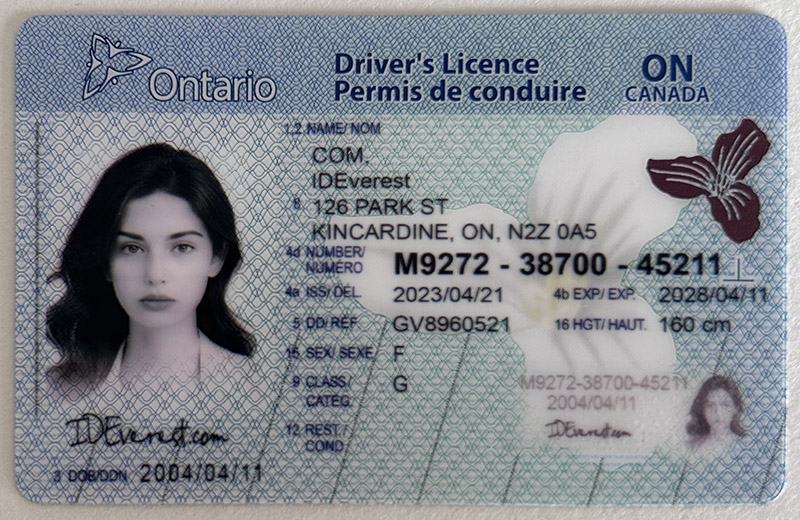
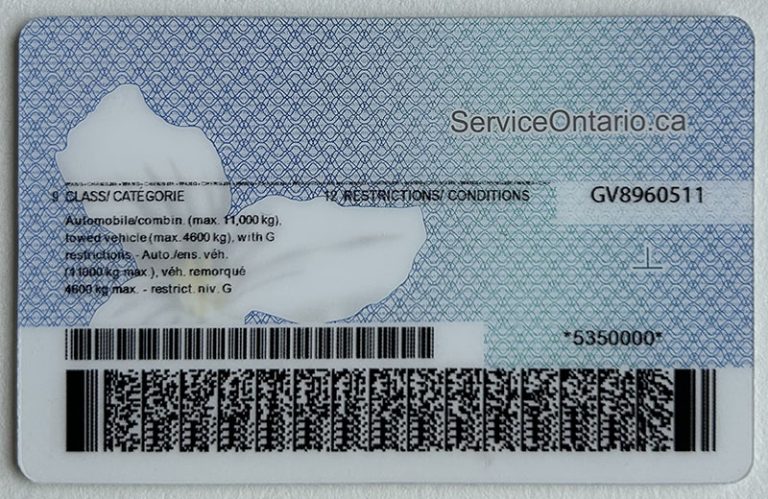

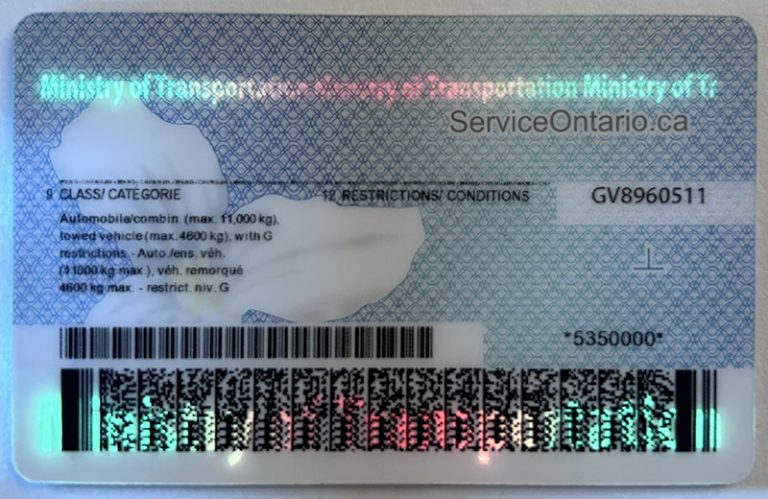
4. G1 Practice Driving:
License holders must complete at least 12 months of practice driving, during which they must log at least 20 hours of driving time, including 10 hours of night driving.
Decoding of Ontario Driver License Number Format and Its System.
In this section, we will discuss the number format and system of Ontario Driver License and how to decode it. The information provided is based on official sources and reverse engineering discussions as shown in the link provided: https://reverseengineering.stackexchange.com/questions/25693/trying-to-decode-the-ontario-drivers-license.
Ontario Driver License Number Format
Ontario Driver License Number consists of 9 digits, where each digit has a specific meaning. The format or code of the license number is as follows:
Ontario Driver License Number Code Format: LAaaa-BBBMY-YMMDD, which means the last 6 digits of the driver license are y-ymmdd of your birthday.
L is the first letter of your last name, which means the first letter of your driver's license is the same as the first letter of your last name
A is the numeric code for the last name (see Table 1 below)
aaa is the numeric code for the last name.
BBB is the numeric code for the first name.
M is the numeric code for the middle name
YY is the last 2 digits of the year of birth
MM is the month of birth, 01-12 for males and 51-62 for females (females add 50 to the month of birth)
DD is the date of birth
The last 6 digits of a Canadian driver's license reflect the date of birth in the format: YYYY-MM-DD (for example, 1978-01-28)
1. The first two digits represent the year of birth. For example, if a person was born in 1978, the first two digits would be "78".
2. The next three digits represent the month and day of birth. For example, if a person was born on January 28, 1978, the next three digits would be "0128".
3. The first month digit represents the individual's gender. "5" or "6" represents female, while "1" or "0" represents male.
Decoding an Ontario driver's license number
Now that we understand the format of an Ontario driver's license number, let's use the example mentioned earlier to decode this number: Z3187-38475-45218.
Driver's license number: Encoded as follows:
Z = Last name initial ZHANG
3187 = Code for last name Zhang
3847 = First and middle initials
5-4 = Year of birth is 1974
5218 = Month, day of birth (female, add 50 to the month of birth) for female, February 18.
https://www.ideverest.com/product/ontario-id/
What are the security features of the Ontario Scannable Fake Driver License or DL or ID (Standard Type) produced by IDeverest
To create the Standard Type Scannable Ontario Fake Driver License or DL or ID, IDeverest uses a variety of technologies and tools, including:
Sophisticated Software:
IDeverest uses specialized software that replicates the exact design and all security features of a genuine Ontario driver license. This software is not typically available to the public and is only accessible to professional ID makers.
Advanced High-Quality Printers:
IDeverest uses high-quality printers that are capable of printing at very high resolutions. IDeverest IDs feature crisp text, vibrant colors, and intricate designs that mimic real IDs. This ensures that the ID looks as realistic as possible.
Holographic Overlay:
The Ontario, Canada Driver License features a holographic overlay of the Ontario corporate logo in a diagonal design that covers a large portion of the front of the card.
Machine Readable Passport (MRP): 100% Readable and Scannable
The 100% scannable fake Ontario driver's license has a magnetic stripe and barcode that contains the cardholder's personal information. IDeverest uses software to encode this information onto the magnetic stripe and barcode of the fake ID. Once scanned, the ID card will display the same information as the real ID.
High Quality Polycarbonate or Teslin Material:
The standard type of scannable fake Ontario driver's license or DL or ID is made of the same high quality polycarbonate or Teslin material as the real thing, ensuring durability and longevity. The card itself is made of polycarbonate plastic, which makes it resistant to damage and ensures that it maintains the same appearance as the real card over time.
Holographic Overlay:
The Canadian Ontario driver's license features a holographic overlay of the Ontario corporate logo in a diagonal design that covers most of the front of the card.
UV & Micro-Print Technology:
IDeverest’s scannable 100% authentic Ontario fake ID card or driver’s license or DL contains essential identity information such as date of birth and other images or text invisible to the naked eye via UV printing, and the UV and micro-printing features enhance the authenticity of your ID card.
The UV ink printing consists of a large stylized trefoil offset to the right of the center of the card.
Tactile Technology:
Tactile elements such as raised letters and numbers (e.g. name, date of birth) are difficult to replicate
Other Detailed Features: Magnetic Stripe and Barcode
The 100% authentic scannable fake Ontario driver’s license or DL or ID features a 100% scannable magnetic stripe and barcode.
You can count on us to get what you pay for – a high quality 100% authentic scannable Ontario fake driver’s license or DL or ID card.
https://www.ideverest.com/product/ontario-id/




 create passport photo
create passport photo
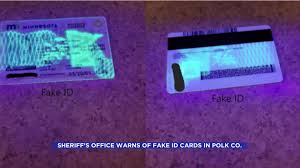 online ID editor
online ID editor
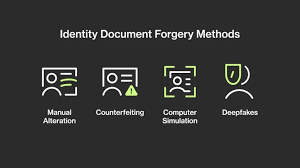 identity fraud
identity fraud
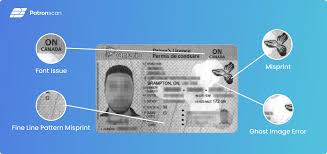 fake identification
fake identification